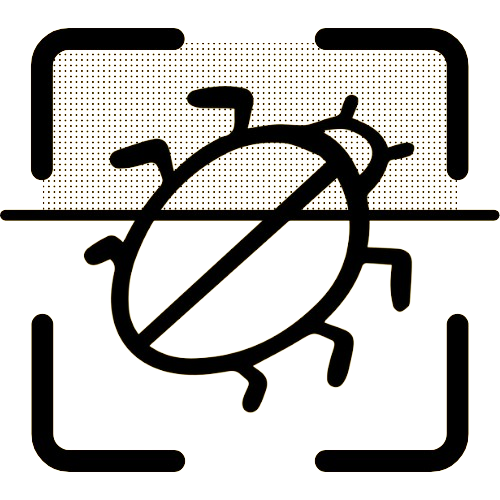Year-End Review: Latest Innovations in Bedbug Detection
December 07, 2024
Year-End Review: Latest Innovations in Bedbug Detection
As concerns over bedbug infestations continue to mount globally, innovations in bedbug detection have become a focal point for modern pest management strategies. With the primary goal of improving accuracy and efficiency, the latest advancements in bedbug detection technologies offer promising solutions for homeowners and pest control professionals alike. This article delves into the most recent developments in the field, providing a comprehensive overview of how these innovations enhance traditional pest control methods. By understanding these new detection methods, you can better protect your home and enjoy peace of mind.
2024 Technology Overview
The landscape of pest control technology has evolved significantly over the past year. In 2024, bedbug detection innovation highlights the integration of cutting-edge technologies such as artificial intelligence, machine learning, and advanced sensor systems. These advancements are part of a broader shift towards more scientific and precise approaches to pest management, underscoring the need for modern methods to address an age-old problem. As we explore these innovations, it's clear that they hold the potential to revolutionize how we handle bedbug infestations.
AI Detection Advances
Artificial intelligence (AI) has made significant strides in various fields, and pest control is no exception. AI-driven detection systems utilize complex algorithms to identify even the smallest traces of bedbug activity. These systems can analyze data from a variety of inputs, including high-resolution images and environmental sensors, to provide real-time detection accuracy. The integration of AI in bedbug detection allows for more precise identification, reducing false positives and ensuring treatment efficacy.
For pest control professionals, these AI tools are invaluable. They offer detailed reports and can predict potential infestation areas, optimizing resource allocation and enhancing the overall effectiveness of pest control programs. For tech-savvy homeowners, AI detection devices are available as easy-to-use smartphone apps, allowing for instant detection and continuous monitoring. If you're interested in learning more about this technology, visit our post on the science of bedbugs.
Traditional vs Modern Methods
While traditional bedbug detection methods, such as visual inspections and trap-based approaches, have served as the bedrock of pest management, modern methods aim to enhance and sometimes replace these techniques. Traditional methods often rely on human expertise and manual labor, which can be time-consuming and prone to error. In contrast, modern technologies offer automation, speed, and accuracy.
For example, traditional traps may take days to show results, whereas digital monitoring systems can alert homeowners or pest control technicians to the presence of bedbugs almost instantaneously. By comparing these methods, we can see that while traditional techniques may still play a role, they're increasingly supplemented or replaced by tech-driven solutions that improve detection rates and reduce labor costs.
Cost-Effectiveness Analysis
One of the most pressing concerns for both homeowners and pest management professionals is cost-effectiveness. Fortunately, bedbug detection innovations have made significant progress in this area. While initial investments in advanced technologies, such as AI-powered detectors or state-of-the-art monitoring systems, may be higher than conventional methods, their long-term benefits often outweigh the costs.
Automated systems reduce the need for repeated manual inspections, thus decreasing labor costs. Additionally, early and accurate detection minimizes the potential for costly widespread infestations, adding a further layer of savings. This proactive approach not only protects financial interests but also reduces the mental and emotional strain associated with handling a bedbug problem.
User Experience Reports
With the influx of new bedbug detection technologies, user experience has been overwhelmingly positive. Many users report that these systems are not only effective but also user-friendly. Apps and devices are designed with the consumer in mind, ensuring that both amateurs and professionals can understand and operate them with ease. From user feedback, it's evident that the convenience of real-time alerts and simple interfaces provides an enhanced experience, encouraging more widespread adoption.
As more individuals turn to these technologies, the shared knowledge base and community support continue to grow, helping users maximize the benefits of modern pest management tools. To see how easy it is to get started, check out our guide on discovering the Bedbug Scanner.
Future Predictions
Looking ahead, the future of bedbug detection holds even more promise. Innovations on the horizon include advanced nanotechnology sensors and further developments in AI, offering unprecedented accuracy and speed. As these technologies continue to evolve, we can expect even more seamless integration into our daily lives. The possibilities for connecting these systems to smart home technology could further enhance early detection and prevention, ushering in an era of autonomous pest management.
Experts also predict a shift towards fully integrated pest control solutions, combining detection and treatment into one streamlined process. This integrated approach will likely reduce the time and effort involved in tackling infestations, ultimately leading to even greater consumer satisfaction.
Implementation Guidelines
For those ready to embrace next-generation detection methods, there are several key steps to ensure successful implementation. First, assess your specific needs and budget constraints to determine the most suitable technology for your situation. Next, familiarize yourself with the chosen technology by consulting user manuals, online tutorials, or professional training sessions. Lastly, regularly maintain and update your detection systems to ensure continued efficacy and protection against bedbugs.
Embracing these innovations not only safeguards your home but also positions you at the forefront of modern pest management practices.
Conclusion
The realm of bedbug detection has never been more dynamic. With ongoing innovations driving enhanced accuracy and efficiency, 2024 marks a significant year for pest control advancements. By leveraging these new technologies, homeowners and professionals alike can gain a vital edge in combating bedbug infestations. Ready to experience next-gen detection? Visit Bedbug Scanner to explore the future of bedbug management today.
